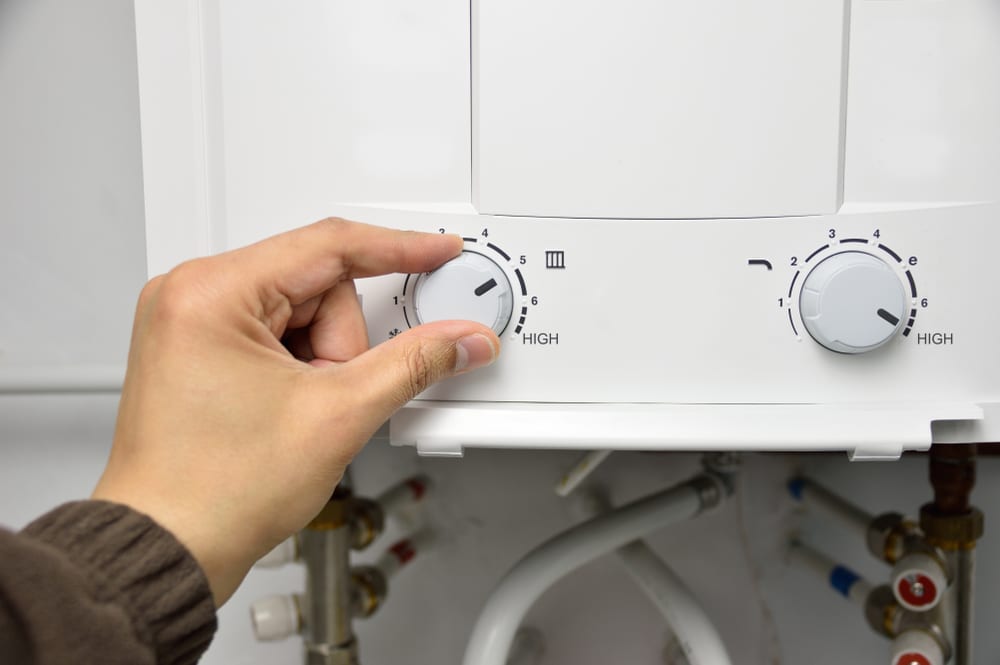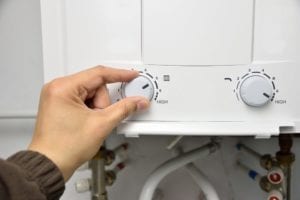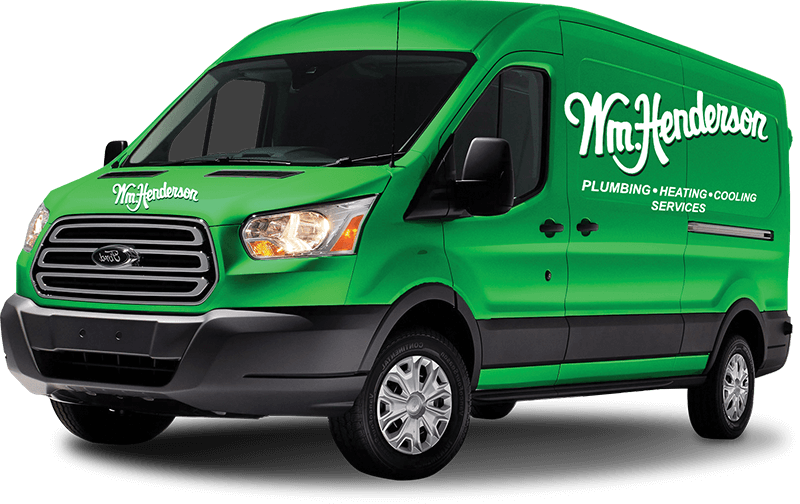
 Tankless water heaters are a smart investment to make because they are energy-efficient, take up minimal space, produce hot water whenever it’s needed, and are easy to maintain. They also have a significantly longer lifespan than traditional water heaters with tanks. Tank water heaters generally hold up for 8-12 years, and even that’s being generous. Tankless water heaters have 20-year warranties, which means they’re expected to last beyond those first 20 years. To ensure your system lasts for years to come, we have compiled a list of tankless water heater maintenance methods.
Tankless water heaters are a smart investment to make because they are energy-efficient, take up minimal space, produce hot water whenever it’s needed, and are easy to maintain. They also have a significantly longer lifespan than traditional water heaters with tanks. Tank water heaters generally hold up for 8-12 years, and even that’s being generous. Tankless water heaters have 20-year warranties, which means they’re expected to last beyond those first 20 years. To ensure your system lasts for years to come, we have compiled a list of tankless water heater maintenance methods.
Ways to Increase the Life Cycle of Your Tankless Water Heater
To ensure that your tankless water heater functions properly, follow these simple maintenance tips:
1. Sanitize the Interior
Keeping your unit clean is the first tip to follow to achieve proper tankless water heater maintenance. A general rule of thumb is to sanitize your unit once a year. However, this can vary depending on water quality in your area (i.e. soft or hard). Hard water contains a surplus of minerals—such as calcium and magnesium. When hard water runs through your water heater, those minerals build up over time and can cause long-term damage if not treated properly. If you live in a local area with hard water, the easiest way to maintain your tankless water heater is to sanitize your system a few times per year to make sure it stays clean. Do you live in a neighborhood with soft water? Sanitizing your water heater one time per year is sufficient.
2. Maintain the Exterior
Wipe It Down
While sanitizing the interior of your tankless water heater might be the most important step to ensuring proper function and longevity, maintaining the exterior is another crucial component. Thankfully, exterior maintenance takes little time and few supplies to do. With a spray cleaner and a washcloth, wipe the tank’s cover. This step keeps away dust and rust that could cause irreversible damages.
Check the Pipes
If you live in a colder climate, a critical tankless water heater maintenance step is to inspect the water pipes continuously to make sure they don’t have any cracks or other damage. This precaution protects you from the future possibility of dealing with a flooded home due to burst pipes.
Check the Pressure Valve
The last exterior tankless water heater maintenance step is to check the pressure relief valve located at the top of most units. If the pressure in your tank ever gets too high, this component will lower the internal tank pressure by releasing water. It’s important to test this feature regularly to avoid potential water heater catastrophes.
 3. Flush the System
3. Flush the System
In conjunction with step 1, the next step in the tankless water heater maintenance process is to flush your unit. Even when sanitized regularly, the hard water minerals still build up inside the tank over time. You will need to flush your tankless water heater regularly to prevent built-up mineral deposits from causing long-term damage and negatively impacting the unit’s overall efficiency.
4. Keep It Clean
Now that you know to flush your tank regularly, you might be asking, “But with what products?” Here are the main things you’ll need to clean the inside of your tankless water heater:
- – Large bucket
- – Pump
- – Hoses
- – Descaler
These everyday items work together to flush out built-up grime on the interior and help prevent future build-up from occurring.
Tips & Insights: Why Is My Garbage Disposal Not Working?
5. Descale the System
Descaling a tankless water heater is an important maintenance method and can be completed by following a few basic instructions. The first step is to disconnect any electricity flowing to the unit. Shut off the water valves and let out any pressure, if your unit has a pressure relief valve attached. Place the hoses into the cold and hot water ports, put the pump in the bucket, attach the cold hose to the pump, and put the hot hose in the bucket. Next, pour the descaler into the bucket, open the water ports, turn on the pump, and let the descaler work its magic for an hour or so. Turn off the pump, close the water ports, and empty the water when finished.
 4 Advantages of Investing in a Tankless Water Heater
4 Advantages of Investing in a Tankless Water Heater
Read about the primary benefits of owning a tankless water heater:
1. Energy-Efficient
As opposed to traditional tank water heaters, tankless water heaters only warm water when it’s needed. This saves energy, which ultimately saves people money lowering their monthly water and electricity bills. Tank water heaters continuously heat water throughout the day, whereas tankless water heaters only do so on-demand. Tankless water heaters don’t experience the energy loss that tank ones do, making them more energy-efficient.
2. Space-Saver
While tank water heaters are bulky, tankless water heaters are much more compact and can be stored in tight spaces. They’re even small enough to mount on a wall. While a tank water heater has to be stored in a separate space—like a closet—a tankless water heater typically measures only 10 inches tall by 7 inches wide.
3. Continuous Warm Water
Even though tankless water heaters don’t continuously heat water, they still provide plenty of hot water when needed. This type of system does not require a water tank and is connected to a replenishing water source. If you hire a professional to perform continuous tankless water heater maintenance, you will never have to worry about running out of hot water in your home.
4. Long Life Cycle
Tankless water heaters cost more up-front, but their energy efficiency and durability save money in the end. They last longer and have a longer warranty than tank water heaters.
 Tankless Water Heater Installation & Repair Services
Tankless Water Heater Installation & Repair Services
The team of licensed plumbers at WM Henderson are here to help you save time and money and give you peace of mind. Our staff of technicians offer tankless water heater installation and repair services to homes in Pennsylvania. In addition, we offer other types of plumbing services such as sump pump repair, water line replacement, and traditional tank water heater repair. Check out our installation and repair services online, or give us a call at (484) 206-8594 to speak with a knowledgeable technician.

